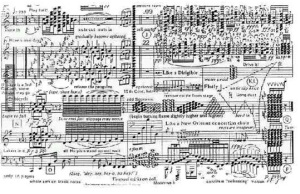My grandmother (and maybe someone you know) used to subscribe to this mainly piano focused magazine, that was published from the late 1890’s until I believe the 1960’s by the Presser Company. I have bought them used at auctions, found some in old book stores, etc. and have consulted them (especially the early twentieth century decades) for inspiration. They always featured a center section of actual sheet music along with the various in depth philosophic articles about music itself.
It would take years to delve into all the insights the writers offered and now I wish I had scanned the articles over the years along with sight-reading, but I have recycled most of my collection to an annual local book sale. At any rate, I have some remaining copies and sometimes my eyes pass over the articles (about historic composer insights, playing techniques, etc.) Here is a quote from a 1910 article that is still worth reading today:
“Personality generates the mystery of interpretation, but there is no more mystery about personality than there is about why two persons are never the same in anything. Personality in the musical artist is the same as personality in the statesman, the writer, or any human worker, and finally resolves itself along a particular line. Much of music’s mystery lies in its unseen qualities, and the mystery of personality lies in the manner in which the artist uses these elements in his interpretation.”
“The artist’s handling of a subject is a question of intelligent manipulation to procure results. Thus the mystery of musical interpretation becomes the mystery of intelligence. Music partakes of the character of the illimitable. Intelligence is not the product of a human brain, but is infinite in character, and the individual who gives the fullest expression of this infinite power will give the most masterful interpretation in art.”






